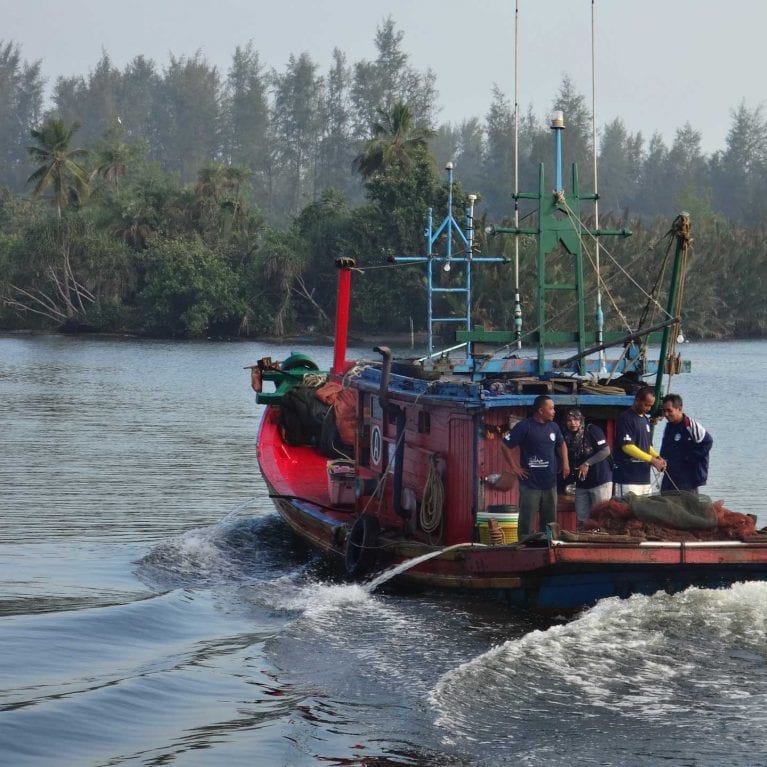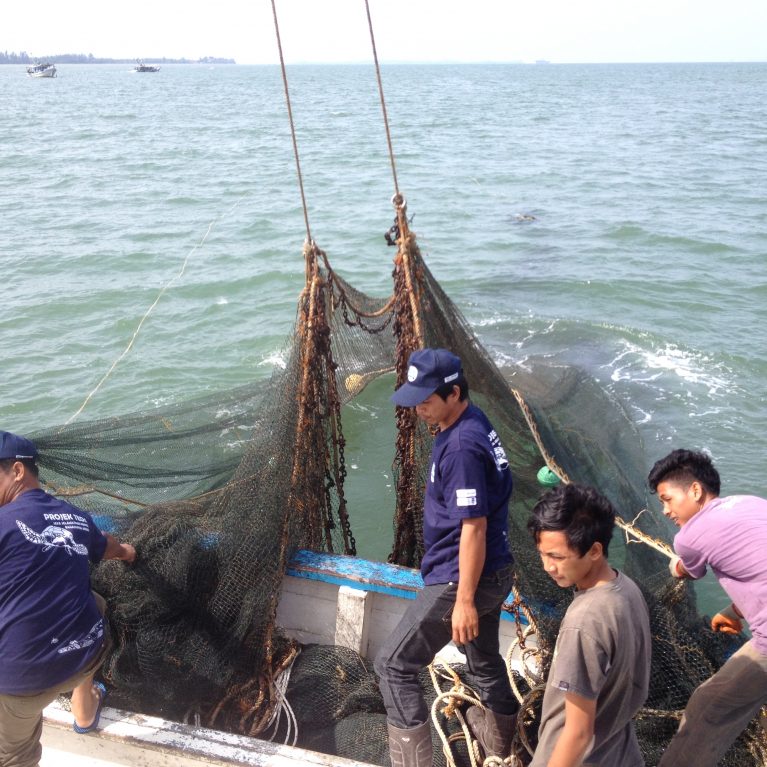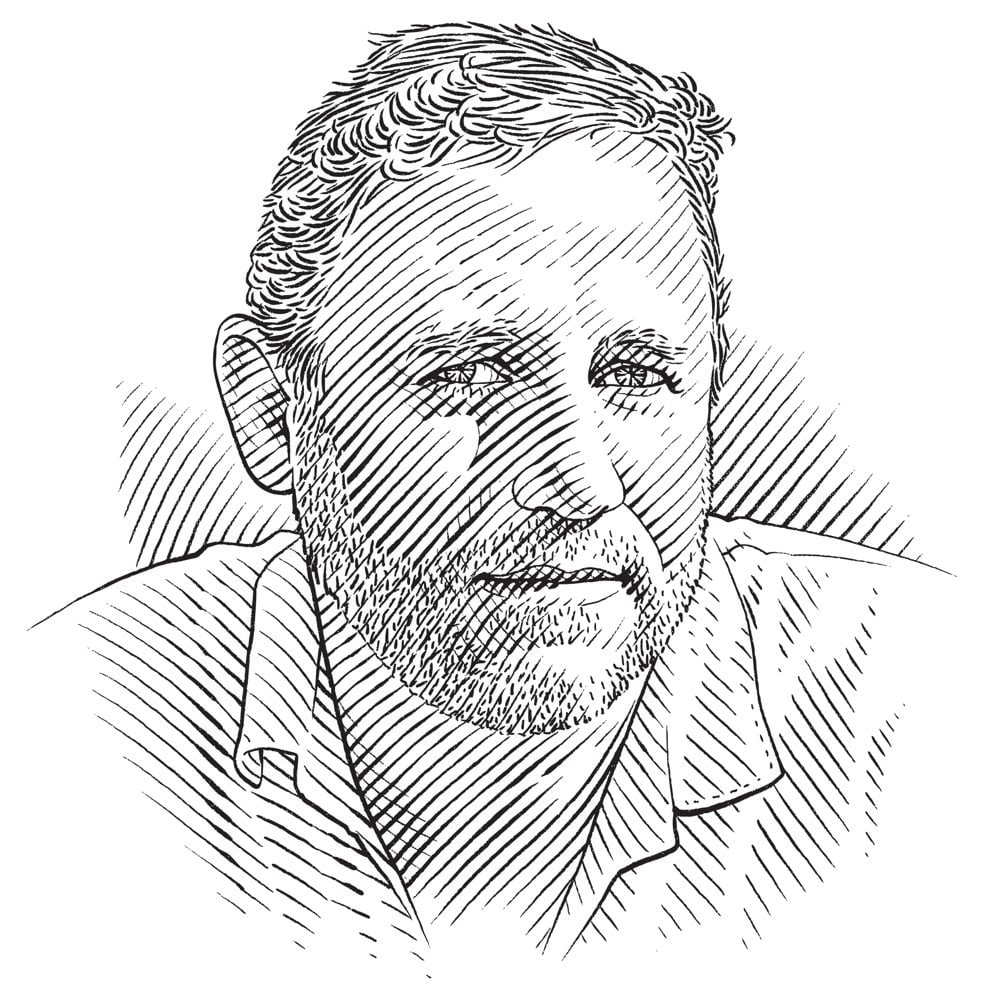Sea turtles of Malaysia
Nick is on a mission to save Malaysia’s turtles. By convincing policy makers and fishermen to equip shrimp trawlers with Turtle Excluder Devices and studying the ecology of the turtles, he’s tackling the problem head on.
I’m a sea turtle guy through and through. I grew up snorkelling all on my own as a kid, and as the years went by and the kilos piled on I got hooked on sea turtles – it was hard not to, really. One thing led to another and I found myself in charge of a turtle project in Saudi Arabia back in 1989. I came over to Malaysia in ’93, and from there the whole Indo-Pacific opened up to me. I have roamed the seas and oceans ever since, doing my turtle thing.
As someone said recently, ‘Nick saves sea...


Sea turtle conservation imperatives in Malaysia
To conserve endangered sea turtles in Sabah, Malaysia, by reducing by-catch of turtles in shrimp trawl nets using Turtle Excluder Devices (TEDs) and through a better understanding of sex ratios and development rates of foraging wild turtle populations to help managers better understand turtle life-cycle dynamics.
Marine turtles are integral components of the Sulu-Sulawesi marine ecosystems, and provide tangible eco-tourism services as well as support for cultural and traditional values. Marine turtles also possess, through their charismatic qualities, an ambassadorial value for wider conservation issues. The conservation of marine turtles is thus a critical step in promoting conservation of the wider marine ecosystem, enhancing marine stewardship and promoting more sustainable fishery practices.
The Marine Research Foundation has supported the conservation of marine turtles in Sabah, Malaysia, continuously over the past seven years, focusing on two key issues: by-catch of turtles in ever-growing trawl fisheries, and the long-term impacts of biased sex ratios from hatcheries on wild turtle populations. A new developing issue is the affect of blast fishing – one of the most unsustainable fishery methods in the world – on marine turtles. These significant issues threaten the viability of sea turtle populations in Sabah, which are among the most important nesting aggregations in South-East Asia.
In Sabah, marine turtles and their habitats have long been identified with conservation needs and are protected by law. But nearly all eggs were moved to hatcheries, which – due to warm development temperatures – produced 100% female hatchlings resulting in unnaturally skewed sex ratios. The demographic data we collect are critical for determining how turtle populations will be influenced by various natural and anthropogenic stresses, and to guide managers in conservation interventions.
In Sabah the use of blast fishing is widespread, and has resulted in the destruction of vast tracts of coral reefs. Turtles are adversely impacted by underwater explosions, and may even die, but the effects of blasts on the surviving turtles are unknown. What are the impacts of blast fishing? Do the turtles become immune to the blasts? Does their heart rate change? Do they need to surface and breathe more frequently? Are there any long-term detrimental effects? Our work will address how illegal blast fishing impacts the developmental phase of a sea turtle’s life cycle, and the information will be used to leverage the government and heighten enforcement for blast-fishing bans.
The aim of this project is to conserve endangered sea turtles through by-catch reduction and an improved understanding of at-sea turtle population dynamics and threats. Specifically, the project will:
- Implement at-sea paired trials with observer coverage, encouraging fisher input into TED design, using the data to demonstrate to fishers the effectiveness of TEDs and to maintain fisher involvement in the TED project.
- Continue laparoscopy work through two research expeditions to capture juvenile green turtles.
- Investigate the impacts of blast fishing with heart-rate monitors linked to time-depth data loggers. This information will be correlated with blast-fishing records on time-stamped hydrophone data.
We hope this work will serve as a benchmark initiative upon which trawl fisheries in Malaysia and the greater South-East Asian region can be based, promoting the transboundary conservation of migratory marine megafauna and indeed all marine fishery resources.

